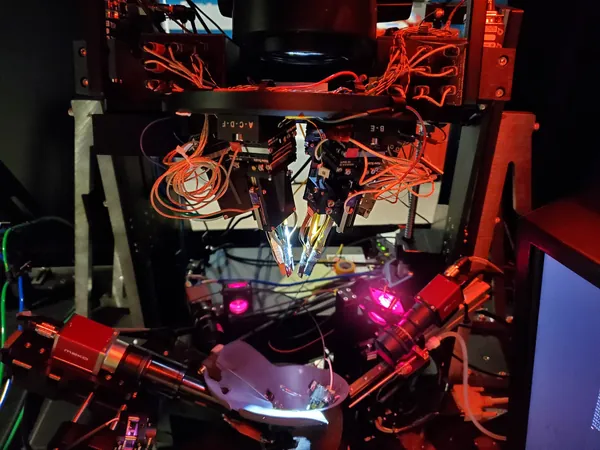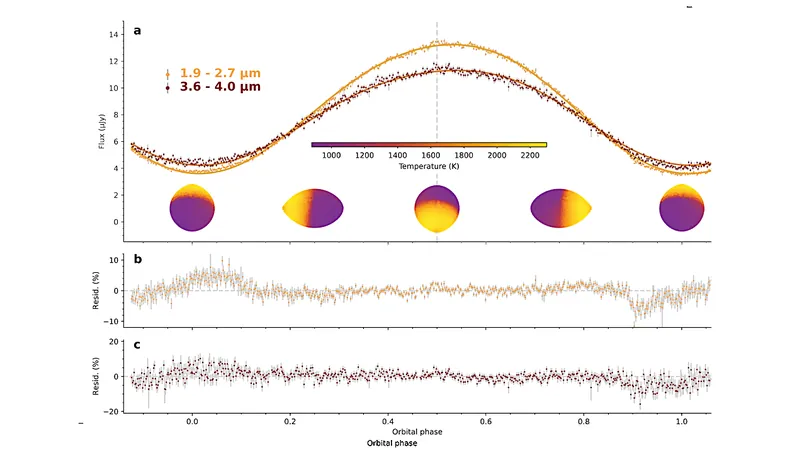
Unlocking the Mysteries of Illusions: How Lasers Illuminate Brain Secrets
2025-09-15
Author: Li
Ever wondered why we sometimes see things that aren’t really there? Enter the fascinating world of illusions, where our brain doesn’t just process what our eyes see—it actively constructs reality. Recent groundbreaking research from the University of California, Berkeley, reveals the intricate workings of our brain that help us perceive these mind-boggling phenomena.
The Science Behind Illusions: A Game-Changer
Published in the prestigious journal Nature Neuroscience, this study uncovers a critical neural circuit responsible for detecting illusions, particularly their outer edges or "contours." The researchers identified a unique type of neuron known as IC–encoder cells, which play an essential role in the brain's interpretation of these illusions.
Meet the IC–Encoder Neurons
Hyeyoung Shin, Ph.D., along with Hillel Adesnik, Ph.D., and their collaborative team, discovered that IC–encoder neurons help us perceive objects that don't exist, a phenomenon termed recurrent pattern completion. In essence, these neurons act like managers directing our brain’s workers, telling them what to see.
How Our Brain Constructs Reality
Imagine the brain as a sophisticated computer. When presented with an ambiguous image—like a set of four black semi-circles that our mind interprets as a white square—higher-level brain areas first interpret the shape and then communicate this perception back to the primary visual cortex through the IC–encoders. It’s a captivating dialogue that shapes what we perceive.
Experiments That Made Waves
The researchers conducted thrilling experiments on mice to explore how these IC-encoder neurons function. By using cutting-edge technology—specifically, two-photon holographic optogenetics—they directed laser beams to stimulate these cells even in the absence of illusions. Astonishingly, this triggered similar electrical activity in the brain as if an illusion were present, effectively recreating the experience.
Implications for Understanding Perception Disorders
These findings aren’t just academic; they hold significant implications for understanding neuropsychiatric disorders. According to Jerome Lecoq, Ph.D., associate investigator at the Allen Institute, disorders like schizophrenia are linked to abnormal activity patterns in the brain. Understanding these neural circuits is crucial for developing effective treatments.
A New Perspective on Vision
Traditionally, we viewed vision as a passive reception of external stimuli. However, this research shifts the paradigm, suggesting our perception is an active construction—akin to a computer monitor that processes and displays information based on intricate calculations influenced by our past experiences.
This revelation opens the door to a new understanding of how we perceive reality, suggesting that our vision could be far more flexible and manipulable than previously thought.



 Brasil (PT)
Brasil (PT)
 Canada (EN)
Canada (EN)
 Chile (ES)
Chile (ES)
 Česko (CS)
Česko (CS)
 대한민국 (KO)
대한민국 (KO)
 España (ES)
España (ES)
 France (FR)
France (FR)
 Hong Kong (EN)
Hong Kong (EN)
 Italia (IT)
Italia (IT)
 日本 (JA)
日本 (JA)
 Magyarország (HU)
Magyarország (HU)
 Norge (NO)
Norge (NO)
 Polska (PL)
Polska (PL)
 Schweiz (DE)
Schweiz (DE)
 Singapore (EN)
Singapore (EN)
 Sverige (SV)
Sverige (SV)
 Suomi (FI)
Suomi (FI)
 Türkiye (TR)
Türkiye (TR)
 الإمارات العربية المتحدة (AR)
الإمارات العربية المتحدة (AR)